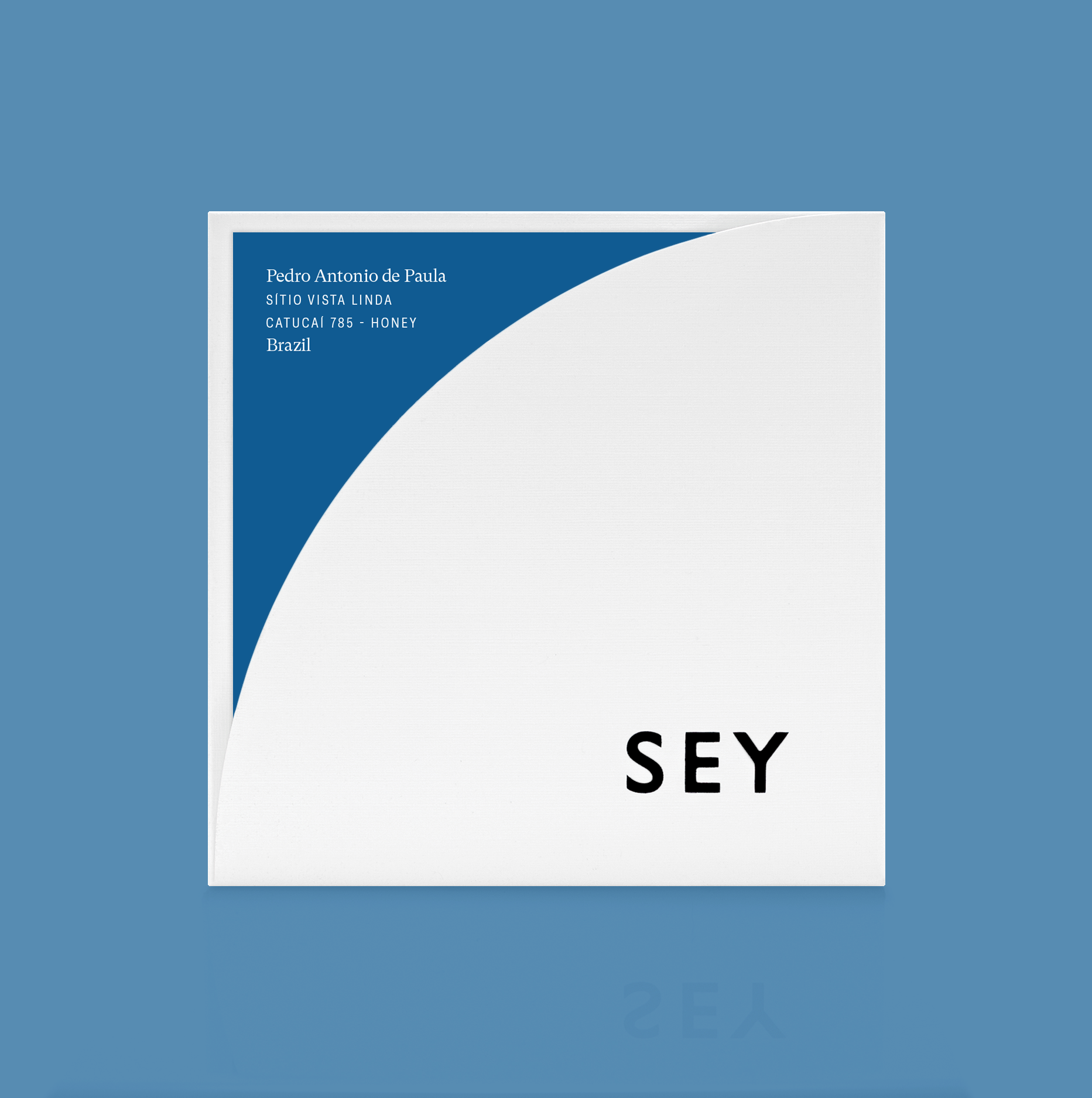
Espírito Santo, Brazil, might be the coffee-producing region we are most excited about. Rarely do we find a new region with this kind of potential. In the cup we find a sweetness-forward profile full of fresh blueberry and raspberry, and a balanced acidity.
First Roast: 03/23/2021
Catucaí 785
Pinheiros, Brejetuba, Espírito Santo
1,100 masl
September - October, 2020
Hand picked at peak ripeness. Floated to further remove defects. Depulped. Dried in mucilage on raised beds until moisture content reaches between 10%-11%.
ABOUT PEDRO ANTONIO DE PAULA
Pedro Antonio and his family have been in Espírito Santo for a couple of generations. When Pedro’s great-grandfather arrived in the region there was absolutely no development, and they first lived in a makeshift home on a stoney mountainside. Today that plot of land has been divided amongst Pedro and his ten siblings. Espírito Santo is potentially the most exciting new region we are currently working in. Rarely have we tasted the incredible potential produced by Espírito Santo’s unique microclimate. Brazil is not known for producing the sorts of coffees and profiles we generally source, however, this specific region is producing some of the most dynamic and interesting coffees we've tasted in quite a while.
ABOUT CATUCAÍ VERMEHLO 785
Catucaí Vermelho 785 is a progeny of Icatú Vermelho and Catuaí Vermelho, and within the Bourbon lineage. It is a small uniform plant with wavy-edged leaves, and bronze-hued new growth. It is high-yielding, produces large red fruit with a large sieve rating, and is both highly leaf-rust tolerant and remarkably stable in varied weather conditions. While generally an early-harvest plant, in certain climates fruit development begins early but slows significantly—a trait that has been utilized to extend fruit maturation and improve cup quality by some of the more astute producers in compatible regions.
Pricing Details
FARM GATE (LOCAL)
16.67 BRL/KG
FARM GATE (USD)
$3.20/KG
FOB
$7.37/KG
FOT
$8.80/KG
The cost of getting a coffee from cherry to beverage varies enormously depending on its place of origin and the location of its consumption. The inclusion of price transparency is a starting point to inform broader conversation around the true costs of production and the sustainability of specialty coffee as a whole.